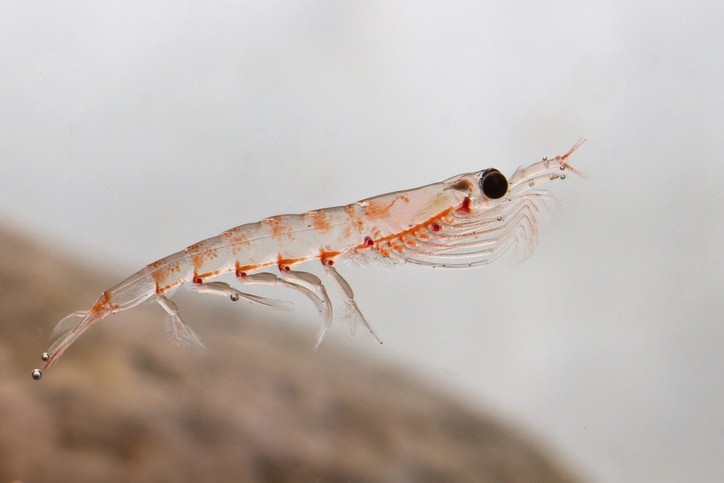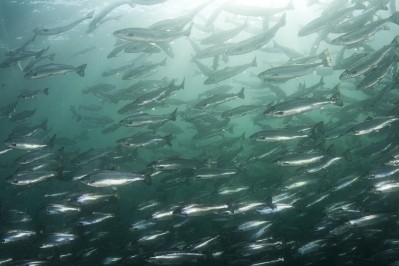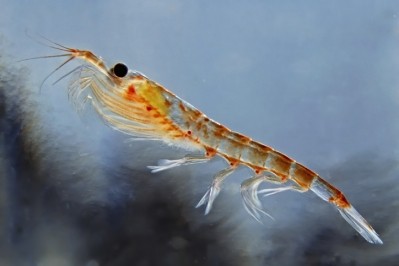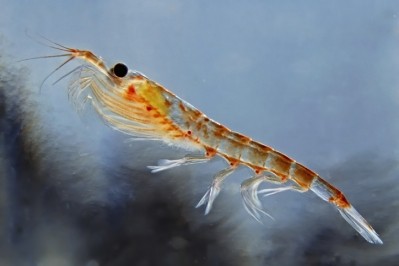Study: Krill boosts sea bass growth by 20%

“The study was prompted by the increased focus on the sustainability of the raw materials in fish diets, as the aquaculture sector seeks alternative ingredients to substitute or supplement increasingly scarce and costly fishmeal, without sacrificing the health and development of the fish,” Kiranpreet Kaur, R&D director, salmonids, at Aker BioMarine, told FeedNavigator.
Krill has been on the aquaculture scene for more than a decade, during which time evidence has been stacking up for the use of this omega-3, protein and astaxanthin rich crustacean as a fishmeal alternative; trials have already been performed on Nile tilapia, olive flounder and shrimps, but this is the first time the Norwegian krill producer has investigated the effects of its inclusion in sea bass diets.
“We chose to embark on this study on the basis of customer requests and the belief that krill would make a significant and positive impact in sea bass,” explained Kaur.
Scientists from the Research Group in Aquaculture (GIA) IU-ECOQUA and Aker BioMarine compared the effects of feeding European sea bass three practical diets with either 15% fishmeal (control) or a fishmeal: krill ratio of either 10%:5% or 7.5%:7.5% .
After 12 weeks of feeding, growth performance, liver morphology, liver proximate composition, lipid classes and fatty acid profiles, as well as the expression of hepatic genes related to lipid metabolism, were evaluated.
Multiple benefits
The findings, published in Aquaculture, were that fish fed the krill meal diets presented significantly higher final weight, protein and lipid efficiency ratios. The krill meal diets also improved Feed Conversion Ratio (FCR) and fish growth by 20%.
The livers of the sea bass fed the experimental diets exhibited a morphological pattern that suggested improved liver metabolism, according to the researchers.
Explaining the importance of liver metabolism as a health marker, Kaur said: “Liver plays a major role in fish lipid metabolism. European sea bass tends to accumulate excessive fat in the cytoplasm of hepatocytes, sometimes causing severe steatosis. Indeed, this species is known to have limited lipid deposition in the fillet.”
She continued: “A healthier liver morphological pattern in European sea bass may be considered an indicator of a better liver lipid metabolism function. For example, krill meal may help to reduce the signs of reduced long-chain omega-3 polyunsaturated fatty acid content in diets with high replacement of marine raw materials, regulating lipogenesis to avoid any lipotoxic effect of high levels of fat deposition.”
Similar findings
Kaur said that the results of this study are very similar to previous findings demonstrating that Antarctic krill meal in fish diets improves growth, feed efficiency and organ health status.
She cited a 2019 study of krill meal inclusion in shrimp diets, which showed that the krill meal diet was the most effective at increasing body weight and final yield as well as reducing FCR.
Asked about Aker BioMarine’s plans for future research, Kaur said: “We are continually conducting studies to further demonstrate the benefits of krill meal. There are currently studies in the pipeline on various species, including shrimp, crab and different marine fish.”
Environmental benefits
Whilst the trial focused on the development, health and performance advantages of krill meal, one of the most important benefits associated with this fishmeal alternative is its low environmental impact, according to Kaur.
“By including krill in an aquafeed composition, the environmental impact of fish/shrimp can be reduced. This is important, since the composition of aquaculture feed is the single most important input contributing to the carbon footprint of aquaculture products,” she said.
As far as other alternatives are concerned, Kaur conceded that insect and algae are also sustainable sources but pointed out that they are only available in limited volumes.
“Antarctic krill has the largest single-species biomass and is an under-utilized protein source. The precautionary catch quote and trends in biomass ensure that krill stocks count among the best managed marine resources.”
Kaur added that as yet no tests had been carried out on the comparative performance of krill, insect and algae meals, but said: “it could be of interested to identify potential synergies”.
Source: Aquaculture
DOI: https://doi.org/10.1016/j.aquaculture.2021.737166
Title: Replacement of fish meal by Antarctic krill meal in diets for European sea bass Dicentrarchus labrax: Growth performance, feed utilization and liver lipid metabolism
Authors: S. Torrecillas, D. Montero, M. Carvalho, et al.












